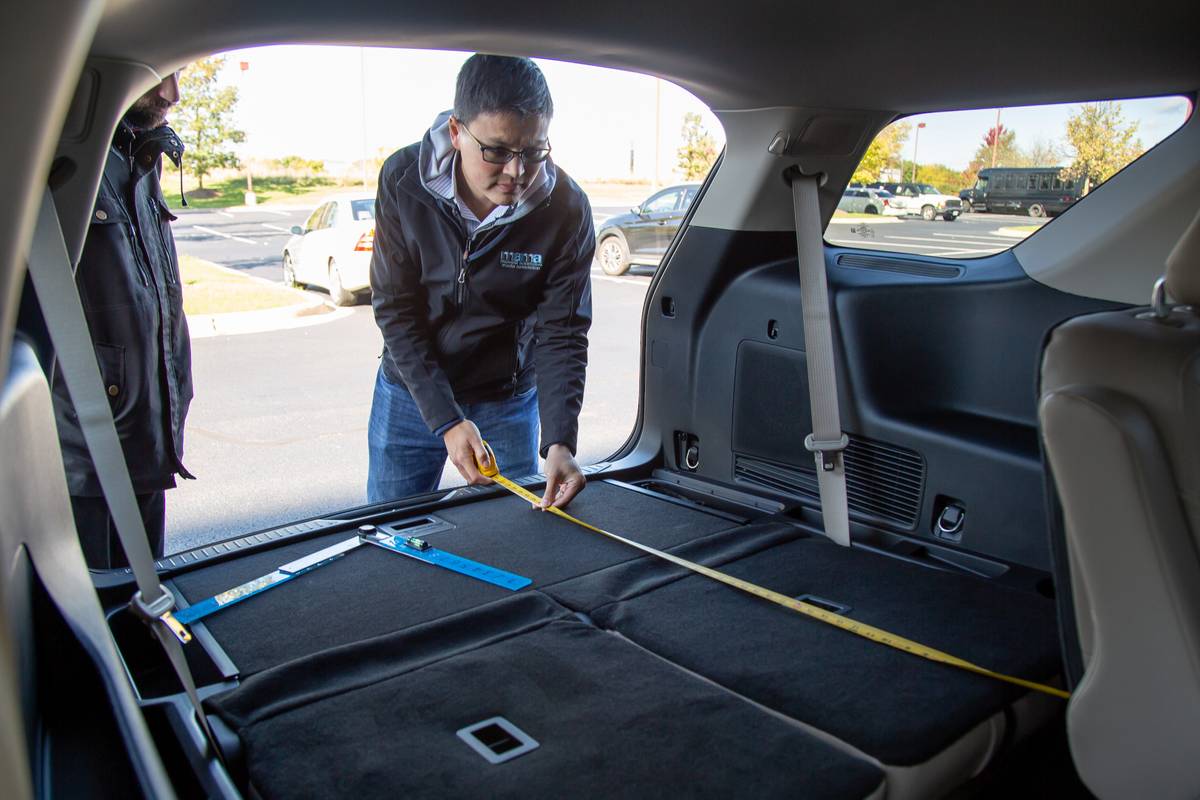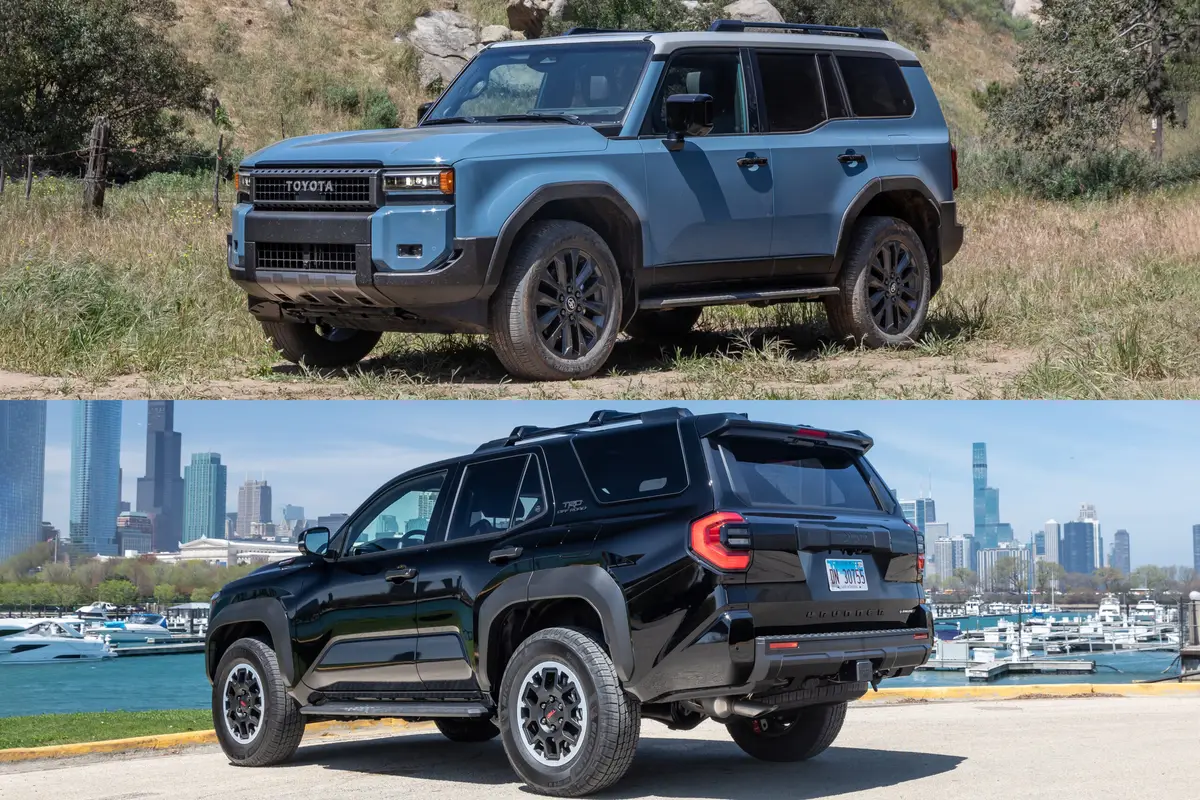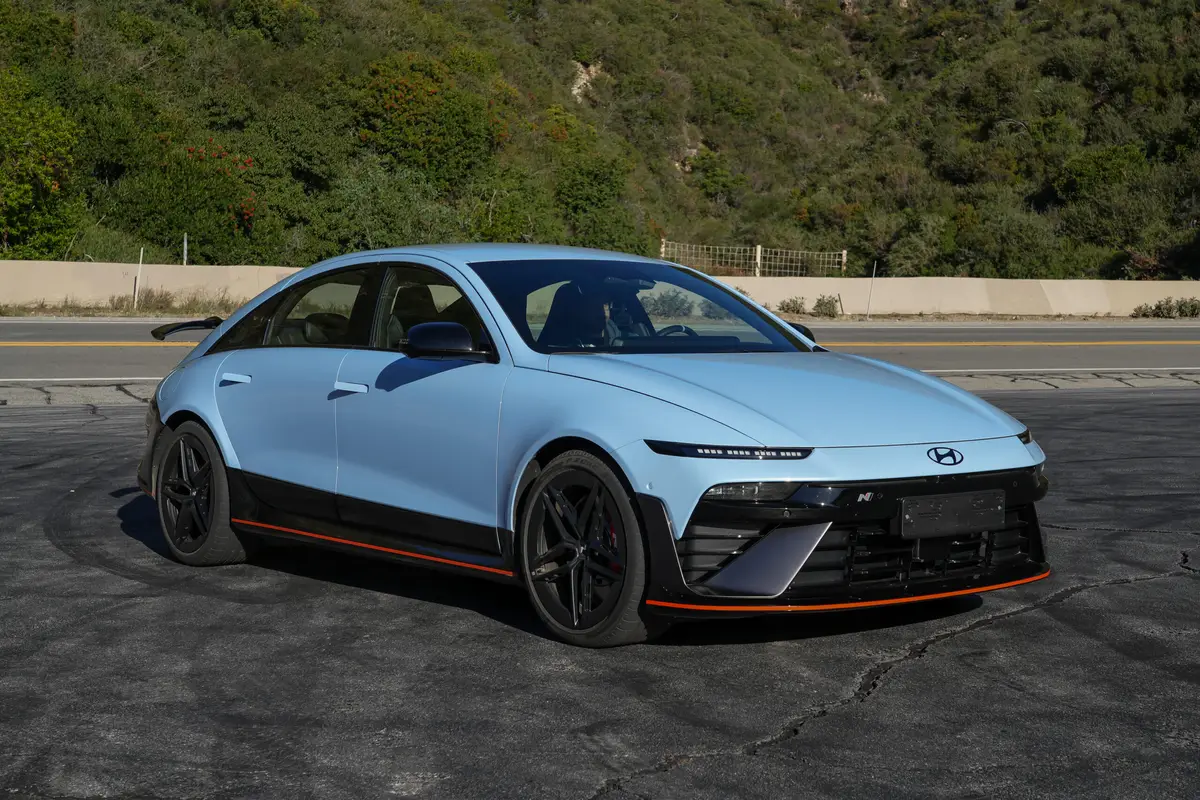Which SUVs Have the Most Cargo Space in 2019?


Editor’s note: Since publishing this story, Cars.com has developed new, more robust methodology for evaluating cargo space. See our full results on SUVs and other vehicle classes for vehicles from the 2020 model year onward. The figures below represent earlier methodology and cannot be compared to our current as-tested cargo figures.
SUVs emphasize utility, and few aspects better quantify that than cargo space. Judging which SUVs have the most, however, gets tricky. Manufacturer-reported cargo specs would seem to have you covered, but such figures are an unreliable comparison tool due to inconsistent methodology.
- ${price_badge()}
- ${ami_badge()}
- ${battery_badge()}${ev_report_link()}
- ${hot_car_badge()}
- ${award_badge()}
- ${cpo_badge()}
${price_badge_description}
${ami_badge_description}
The EV Battery Rating is based on this vehicle's current expected range relative to the vehicles expected range when new. ${battery_badge_text}
This vehicle is certified pre-owned, backed by a manufacturer warranty, and typically undergoes a rigorous multi-point inspection to ensure quality and reliability.
This vehicle is currently in high demand given its competitive price, desirable features, and overall condition, and may have a higher chance of selling quickly.
Shop the 2019 Toyota RAV4 near you


That’s why Cars.com independently measures cargo space in our multicar comparison tests. In 2019, we compared three groups of mass-market SUVs: compact models, mid-size two-row SUVs and larger SUVs with three rows. Each comparison included measurements of cargo space, either with stacked boxes or measured dimensions. Here’s what we found.
Compact SUVs
Early in 2019, Cars.com measured volume behind the second row among seven compact SUVs for our 2019 Compact SUV Challenge. To measure each cargo area, we stacked boxes behind the second row up to the height of the seatbacks — not to the top of the head restraints or ceiling, where you shouldn’t stack cargo for the sake of visibility and safety — with the liftgate able to easily close. Here are the results:
- 2019 Honda CR-V: 17.21 cubic feet
- 2019 Toyota RAV4: 14.50 cubic feet
- 2019 Hyundai Tucson: 14.26 cubic feet
- 2019 Volkswagen Tiguan: 14.12 cubic feet
- 2019 Nissan Rogue: 13.51 cubic feet
- 2019 Subaru Forester: 13.24 cubic feet
- 2019 Jeep Cherokee: 10.64 cubic feet
For all SUVs, we set any reclining seatbacks to a position as close as possible to 110 degrees with the ground — a comfortable angle for passengers. We positioned any second-row seats with sliding adjustments to their rearmost positions and lowered any height-adjustable cargo floors to their lowest points. The above numbers exclude any compartments underneath the cargo floor, a provision many SUVs now offer. Such areas add incremental volume but aren’t as useful for large objects.
Note that the Tiguan we tested had Volkswagen’s available third row, which we folded down for the test. Even folded into the load floor, the third row takes up some cargo height; it’s likely that a two-row Tiguan would have more as-tested cargo space.
- ${price_badge()}
- ${ami_badge()}
- ${battery_badge()}${ev_report_link()}
- ${hot_car_badge()}
- ${award_badge()}
- ${cpo_badge()}
${price_badge_description}
${ami_badge_description}
The EV Battery Rating is based on this vehicle's current expected range relative to the vehicles expected range when new. ${battery_badge_text}
This vehicle is certified pre-owned, backed by a manufacturer warranty, and typically undergoes a rigorous multi-point inspection to ensure quality and reliability.
This vehicle is currently in high demand given its competitive price, desirable features, and overall condition, and may have a higher chance of selling quickly.
Shop the 2019 Honda CR-V near you


Mid-Size SUVs
As part of our Mid-Size SUV Challenge, we evaluated cargo volume among six two-row contenders, measuring space behind the second row with the seats and cargo floor positioned the same way as when we measured volumes among the compact SUVs. But here we used measuring tape — not stacked boxes — to size up cargo space. Due to the different methodology, the numbers below are not comparable with volumes for the compact SUVs above.
That said, here’s what we observed:
- 2019 Ford Edge: 20.29 cubic feet
- 2019 Hyundai Santa Fe: 19.86 cubic feet
- 2019 Honda Passport: 17.89 cubic feet
- 2019 Chevrolet Blazer: 17.06 cubic feet
- 2019 Jeep Grand Cherokee: 16.23 cubic feet
- 2019 Nissan Murano: 15.23 cubic feet
We measured height to the top of the seatbacks, width between the wheel wells and depth from the base of the seats to the liftgate opening at the vehicle’s centerline.
- ${price_badge()}
- ${ami_badge()}
- ${battery_badge()}${ev_report_link()}
- ${hot_car_badge()}
- ${award_badge()}
- ${cpo_badge()}
${price_badge_description}
${ami_badge_description}
The EV Battery Rating is based on this vehicle's current expected range relative to the vehicles expected range when new. ${battery_badge_text}
This vehicle is certified pre-owned, backed by a manufacturer warranty, and typically undergoes a rigorous multi-point inspection to ensure quality and reliability.
This vehicle is currently in high demand given its competitive price, desirable features, and overall condition, and may have a higher chance of selling quickly.
Shop the 2019 Nissan Murano near you


Larger SUVs
As part of our 3-Row SUV Challenge, we measured cargo volume behind the second row with the third row folded, following the same methodology from the 2019 Mid-Size SUV Challenge. That means you can compare these results to those of the mid-size SUVs above.
- 2020 Chevrolet Traverse: 28.55 cubic feet
- 2019 Volkswagen Atlas: 27.08 cubic feet
- 2020 Hyundai Palisade: 22.92 cubic feet
- 2020 Kia Telluride: 22.92 cubic feet
- 2020 Subaru Ascent: 21.72 cubic feet
- 2020 Ford Explorer: 20.89 cubic feet
- 2020 Honda Pilot Touring: 18.75 cubic feet
- ${price_badge()}
- ${ami_badge()}
- ${battery_badge()}${ev_report_link()}
- ${hot_car_badge()}
- ${award_badge()}
- ${cpo_badge()}
${price_badge_description}
${ami_badge_description}
The EV Battery Rating is based on this vehicle's current expected range relative to the vehicles expected range when new. ${battery_badge_text}
This vehicle is certified pre-owned, backed by a manufacturer warranty, and typically undergoes a rigorous multi-point inspection to ensure quality and reliability.
This vehicle is currently in high demand given its competitive price, desirable features, and overall condition, and may have a higher chance of selling quickly.
Shop the 2020 Hyundai Palisade near you


More From Cars.com:
- What’s the Best Compact SUV of 2019?
- What’s the Best Mid-Size SUV of 2019?
- What’s the Best Three-Row SUV for 2019?
- Chrysler Pacifica Vs. Honda Odyssey: A Couch-Hauling Comparison
- Ranger, Gladiator, Ridgeline, Canyon: Which Has the Best Bed and Tailgate?
Cargo Caveats
You’ll want to note two things: First, the cargo scores you see in our multicar comparisons may not directly correlate with as-tested cargo volumes here. That’s because we also factored in features that aid in accommodating cargo, such as powered liftgates or cargo-area controls to fold the seats down. Although measured volume made up most of each SUV’s respective score, it didn’t make up all of it.
Second, the stated volumes reflect the cars we tested, which were generally well-equipped top trim levels. Lower trims may have variances — a missing stereo subwoofer, for example — that affect cargo space. Use these volumes as a comparison tool, but remember that the space in your prospective car may vary. Want more? Take a deep dive into each group by reading our comparisons.
Cars.com’s Editorial department is your source for automotive news and reviews. In line with Cars.com’s long-standing ethics policy, editors and reviewers don’t accept gifts or free trips from automakers. The Editorial department is independent of Cars.com’s advertising, sales and sponsored content departments.

Former Assistant Managing Editor-News Kelsey Mays likes quality, reliability, safety and practicality. But he also likes a fair price.
Featured stories



